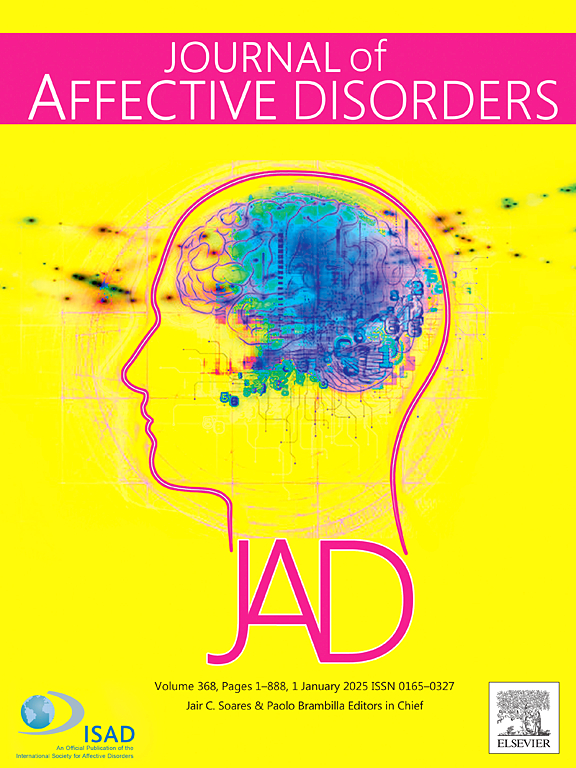磁感应强度的改变与重度抑郁症患者右侧杏仁核的脑血流量增加有关。
IF 4.9
2区 医学
Q1 CLINICAL NEUROLOGY
引用次数: 0
摘要
本文章由计算机程序翻译,如有差异,请以英文原文为准。
Alterations in magnetic susceptibility correlate with higher cerebral blood flow in the right amygdala of patients with major depressive disorder
Background
The amygdala plays a crucial role in emotion processing and is a key target for understanding the mechanisms underlying major depressive disorder (MDD). This study aimed to investigate the magnetic susceptibility of the amygdala in MDD and examine its association with structural and cerebral blood flow (CBF) changes.
Methods
A total of 158 individuals were included in the study, comprising 86 patients with MDD and 72 healthy controls. Depression severity was assessed using Hamilton Depression Rating Scale. Quantitative susceptibility mapping (QSM), T1-weighted, and arterial spin labeling scans were conducted to measure amygdala magnetic susceptibility, volume, and CBF, respectively. Group differences were compared, and associations between susceptibility, volume, and CBF were examined.
Results
The median susceptibility of the amygdala was significantly higher in MDD patients than in controls (all p < 0.01). In the MDD group, increased QSM value in the right amygdala was associated with higher CBF (r = 0.28, p = 0.01), whereas no significant correlation was found between QSM value and volume (p = 0.76). Increased QSM value in the right amygdala was associated with worse depressed mood (r = 0.30, p < 0.01).
Limitation
Retrospective cross-sectional study conducted at a single center.
Conclusion
The magnetic susceptibility of the amygdala was higher in MDD patients with than in controls. QSM changes in the right amygdala correlated with increased CBF and worse depressed mood, indicating both microstructural and functional alterations. Our results encourage further use of the QSM technique in the elucidation of MDD pathophysiology.
求助全文
通过发布文献求助,成功后即可免费获取论文全文。
去求助
来源期刊

Journal of affective disorders
医学-精神病学
CiteScore
10.90
自引率
6.10%
发文量
1319
审稿时长
9.3 weeks
期刊介绍:
The Journal of Affective Disorders publishes papers concerned with affective disorders in the widest sense: depression, mania, mood spectrum, emotions and personality, anxiety and stress. It is interdisciplinary and aims to bring together different approaches for a diverse readership. Top quality papers will be accepted dealing with any aspect of affective disorders, including neuroimaging, cognitive neurosciences, genetics, molecular biology, experimental and clinical neurosciences, pharmacology, neuroimmunoendocrinology, intervention and treatment trials.
 求助内容:
求助内容: 应助结果提醒方式:
应助结果提醒方式:


